If you’re a casual shooter of small products and need to show them virtually shadow free, here are two cheap tricks that you should explore.
The frame for this product tent is a simple hanging file frame, a file cabinet drawer insert that accommodates hooked file folders. I chose this because it’s sturdy and its frame is thin. The wire frame will reflect if the product is smooth and shiny enough, and we want to minimize that.
The cover is simple: a white cotton bed sheet draped over the frame, with the extra fabric left to fall to the floor. One could, of course, cut the fabric to a more fitting size, and that’s not a bad idea if the client is in the studio with you, as it would look more professional—but I’ll leave that decision up to you.
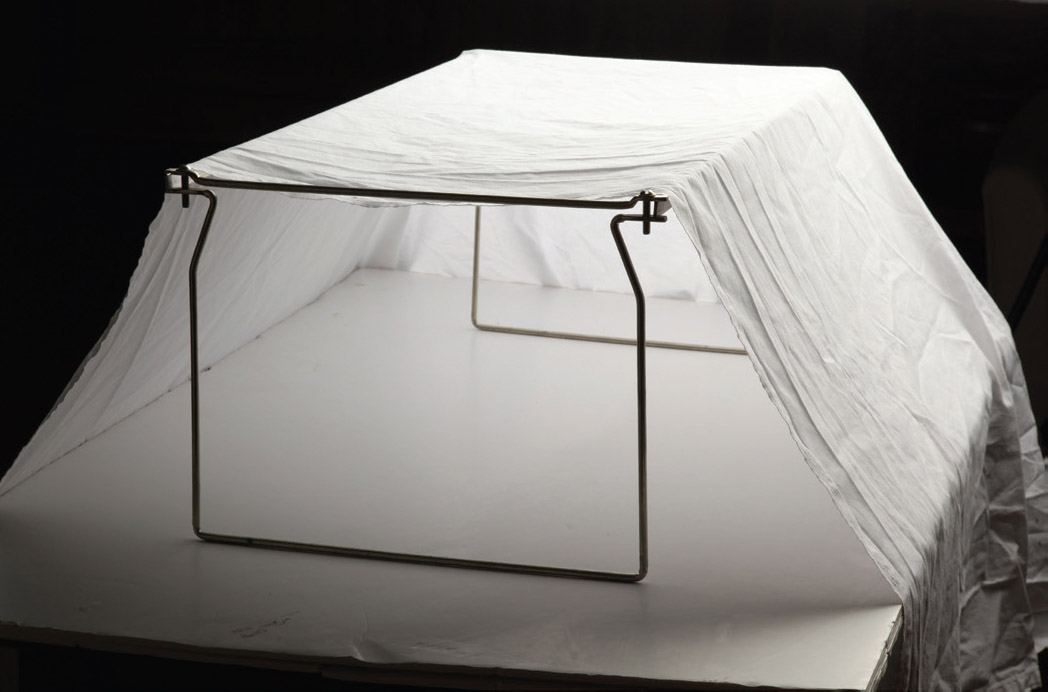
A white sheet stretched over a wire frame makes an easy photo tent.
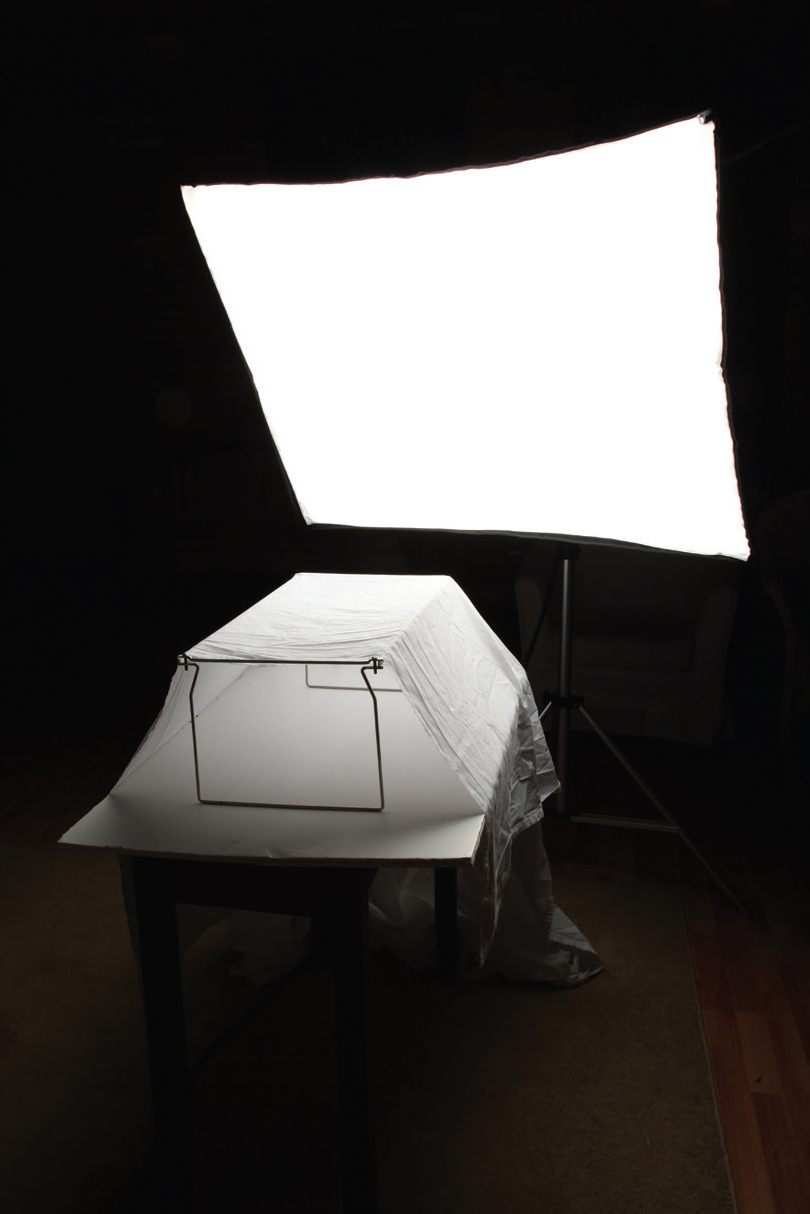
Simply change the position of the light to show a product in its best light.
The base is a piece of white foamcore. Don’t wrap the fabric under the frame, as the texture of the cloth will be seen when photographed.
The light you use can be most anything, as long as it’s soft. An accessory flash unit, for example, will produce light that’s contrasty enough, by itself, to show a shadow even though it’s softened somewhat by the fabric. If that is your light of choice, I’d suggest you pass it through an additional diffuser before it reaches the fabric (see chapter 20). I chose a medium softbox and placed it behind the frame to favor the camera-right side.
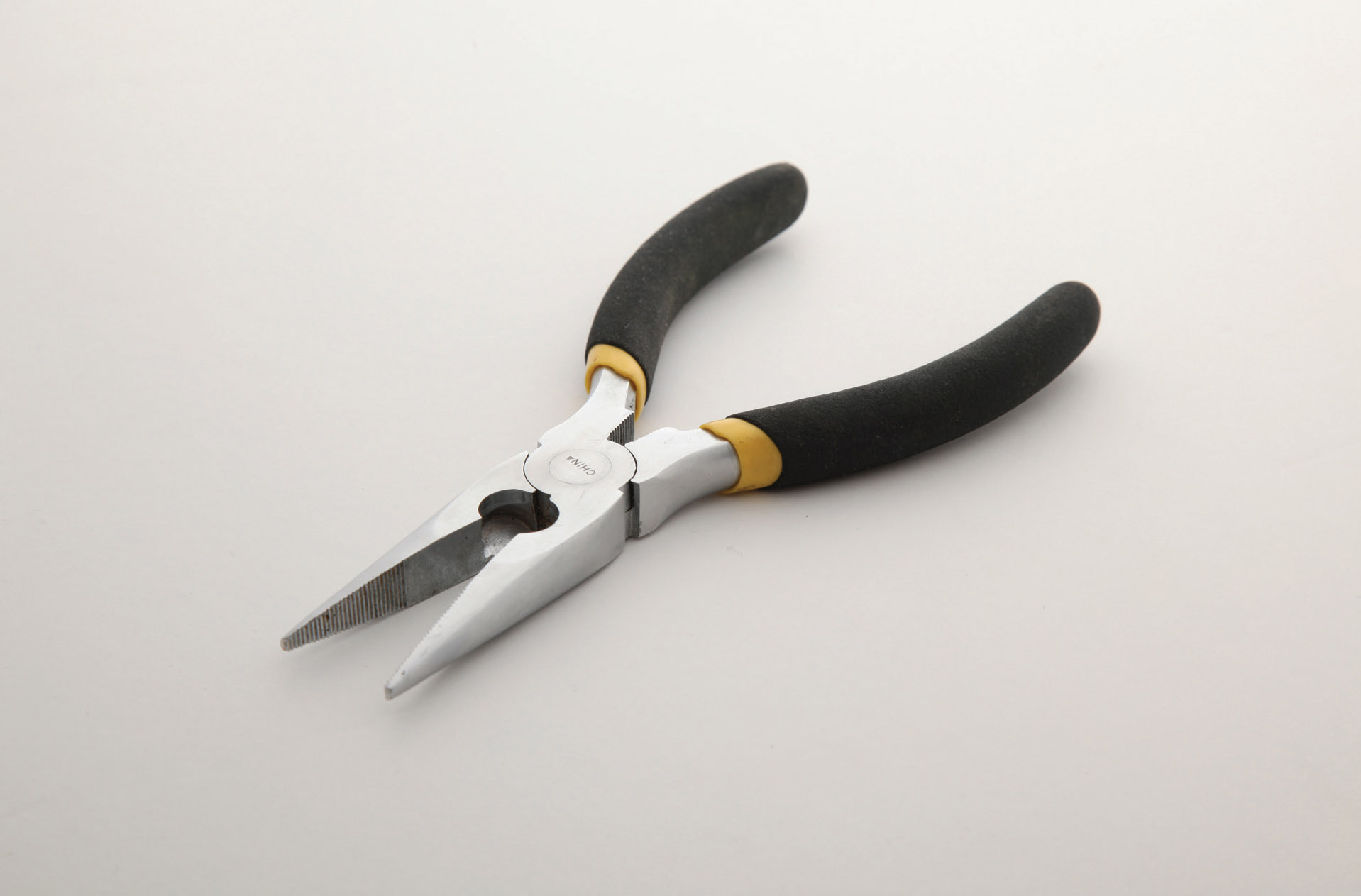
Light inside a photo tent is even, flat, and virtually shadow free.

A white lampshade can be used as a photo tent.
The light-to-shadow direction can be varied just by changing the direction of the main light. It’s also possible to add one or two more lights to further change or refine the look.
While I was working on this chapter, it occurred to me that a white lampshade might serve as an inexpensive light tent for photographing a product from directly above it. I was able to find a white shade easily.
You’ll need a stout wire or bolt cutter to remove the three arms that are connected to the wire ring at the top of the shade, but that’s the hardest part.
I set up my lampshade tent on a patio table, in the shade. It’s not necessary to work under direct sunlight. The shade will diffuse whatever light is available, and today’s image sensors are good enough to handle a higher ISO (800 in my case) without showing noise.
My first product, a fishing reel, looks quite dimensional. I was reasonably happy with it, although I noticed a yellow cast on the background. Lesson learned! Always execute a custom white balance, especially when working with non-photographic light modifiers.
This might be a very effective way for those of you who create products for online stores such as Etsy or eBay to produce nice product shots with a minimum of effort.
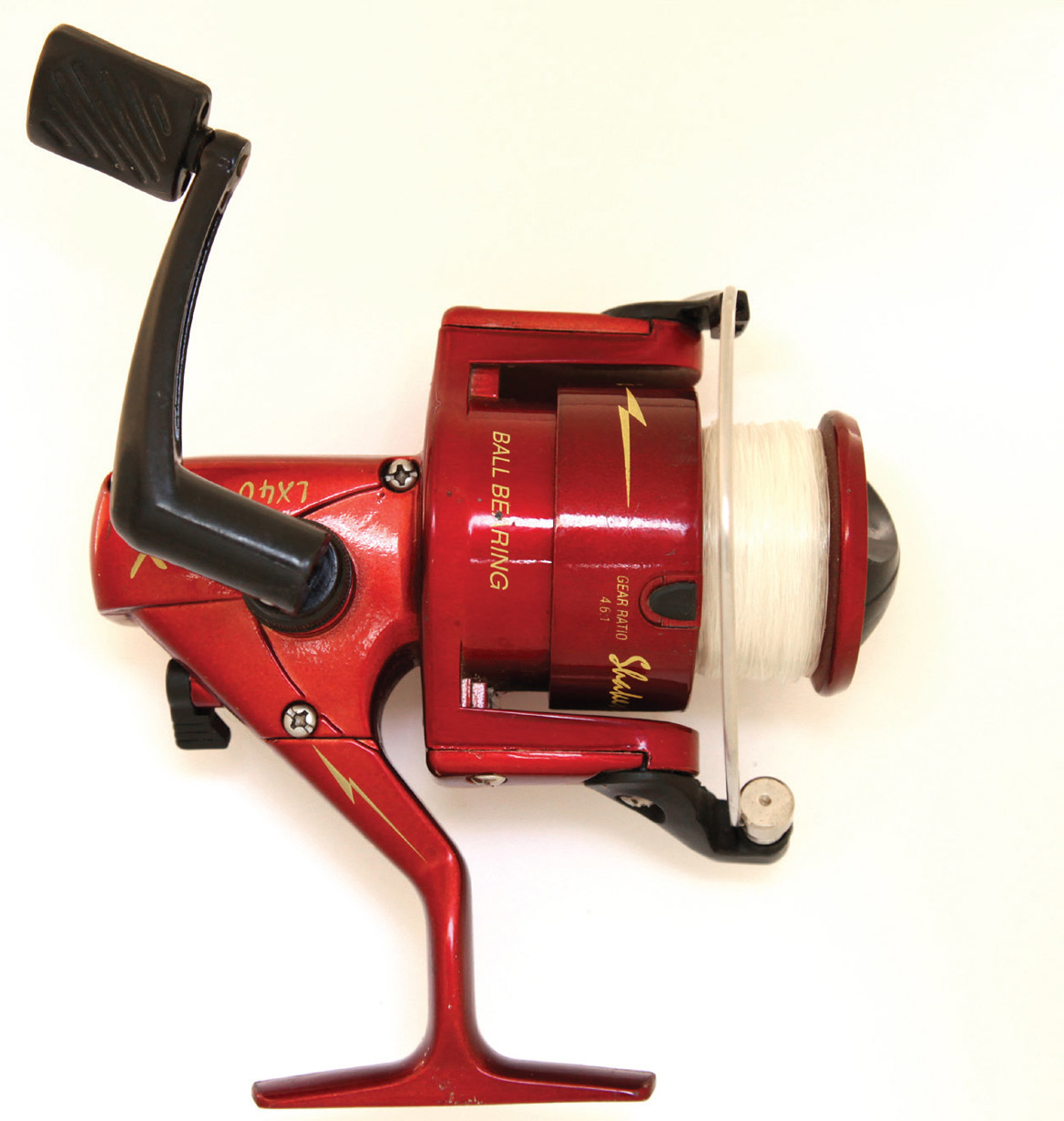
Always execute a custom white balance.
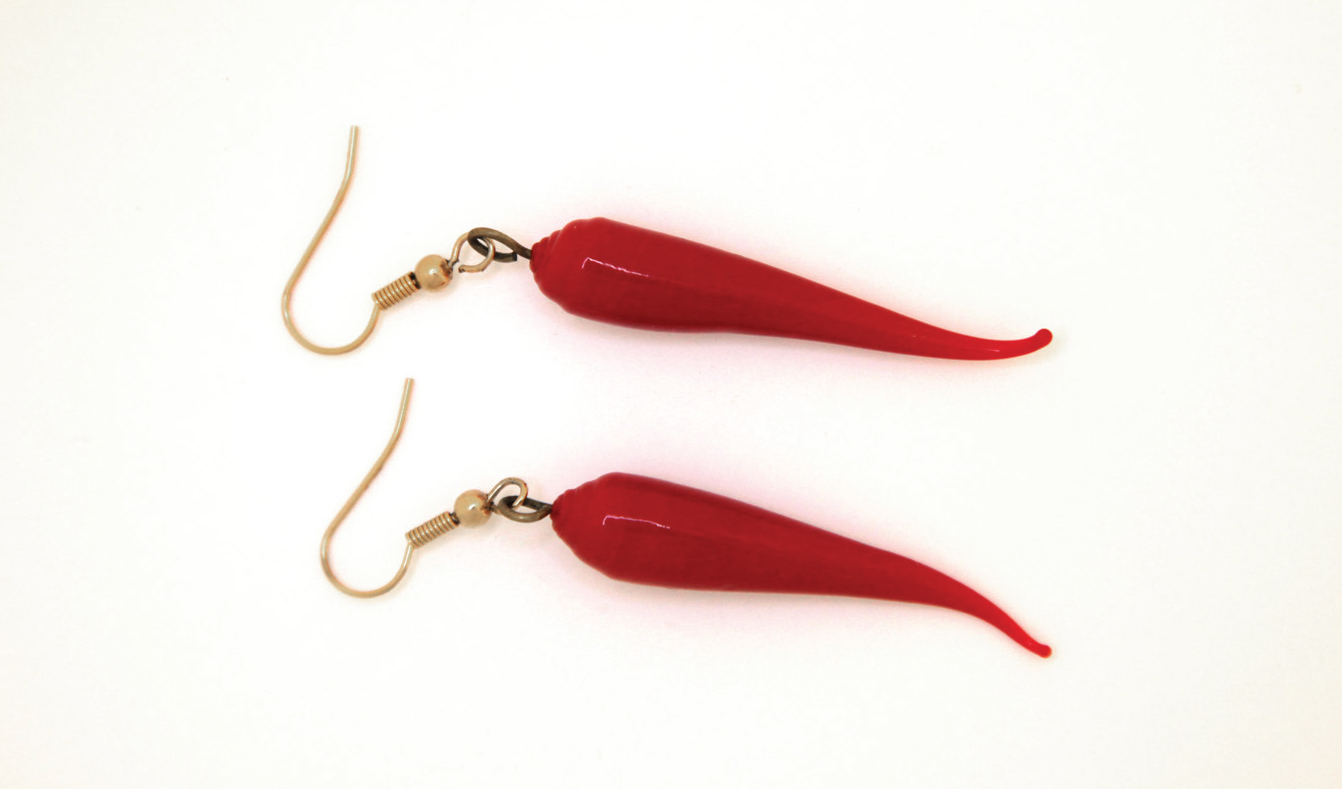
A simple device like this can be perfect for small products.